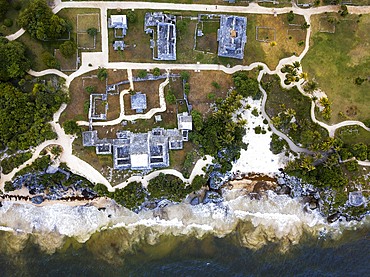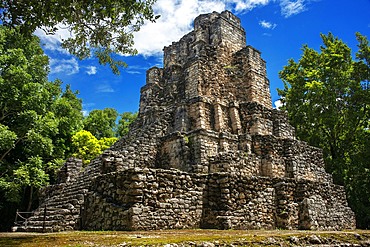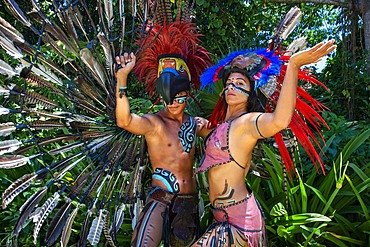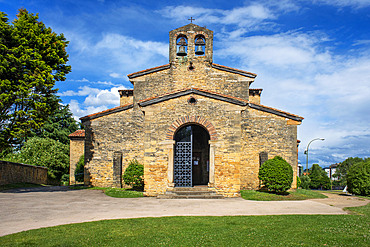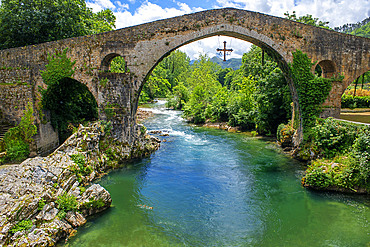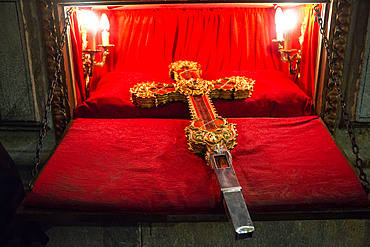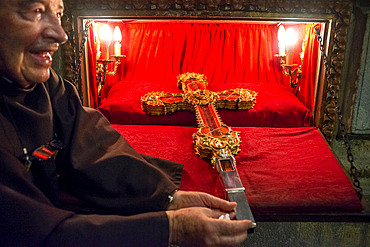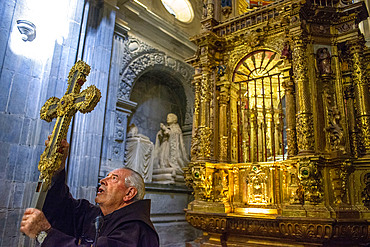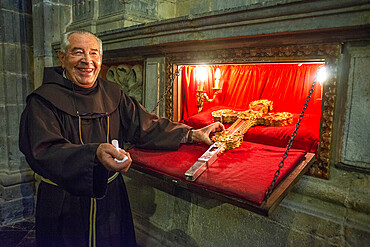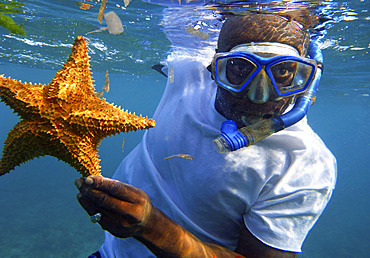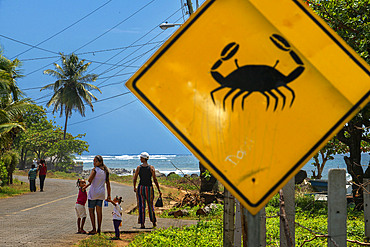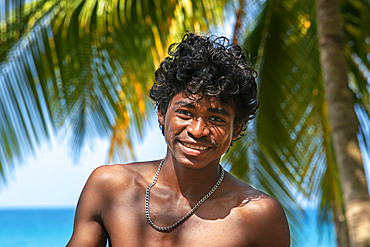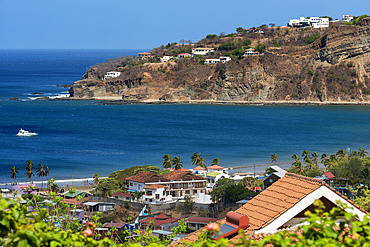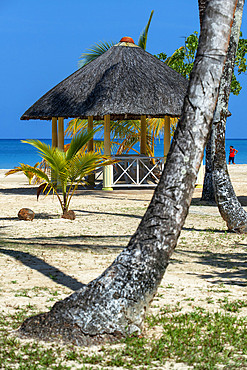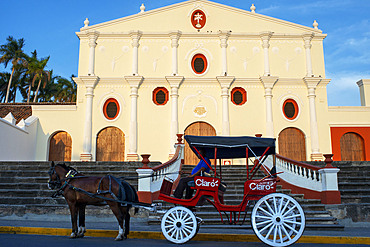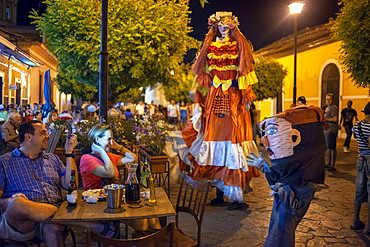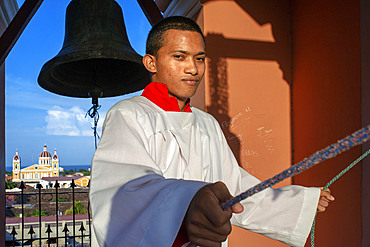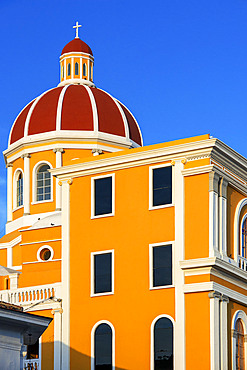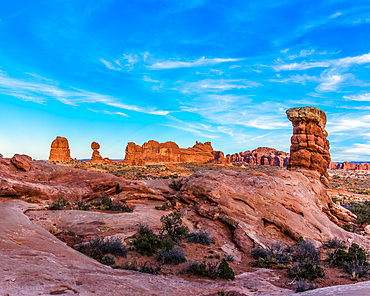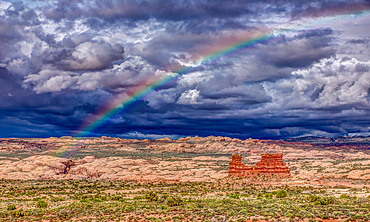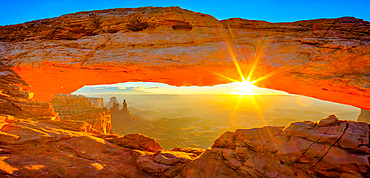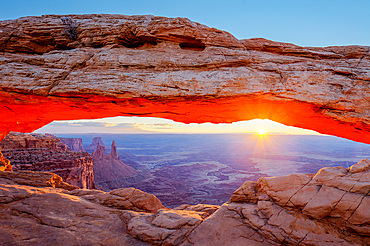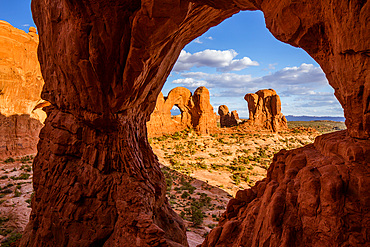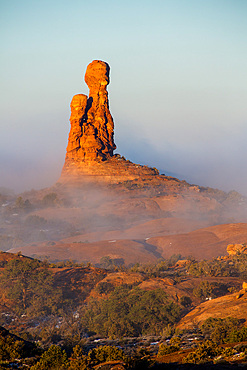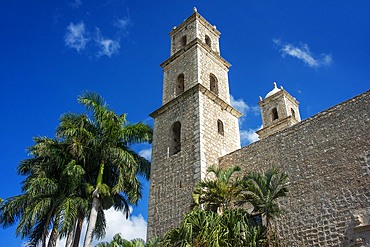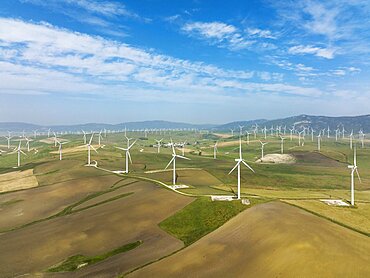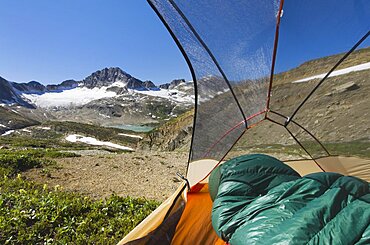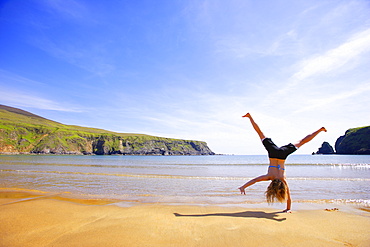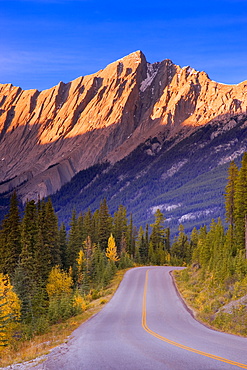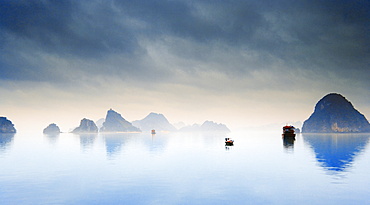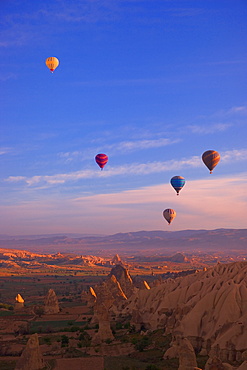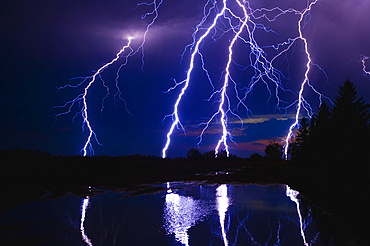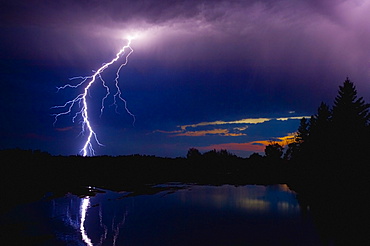Recent searches
Loading...
1350-6597 - Aerial views of El Castillo and the Ruins of the Mayan temple grounds at Tulum, Quintana Roo, Yucatan, Mexico. Tulum is the site of a pre-Columbian Mayan walled city which served as a major port for Coba, in the Mexican state of Quintana Roo. The ruins are situated on 12 meter 39 ft tall cliffs along the east coast of the Yucatán Peninsula on the Caribbean Sea in the state of Quintana Roo, Mexico. Tulum was one of the last cities built and inhabited by the Maya; it was at its height between the 13th and 15th centuries and managed to survive about 70 years after the Spanish began occupying Mexico. Old World diseases brought by the Spanish settlers appear to have resulted in very high fatalities, disrupting the society, and eventually causing the city to be abandoned.
1350-6599 - Aerial views of El Castillo and the Ruins of the Mayan temple grounds at Tulum, Quintana Roo, Yucatan, Mexico. Tulum is the site of a pre-Columbian Mayan walled city which served as a major port for Coba, in the Mexican state of Quintana Roo. The ruins are situated on 12 meter 39 ft tall cliffs along the east coast of the Yucatán Peninsula on the Caribbean Sea in the state of Quintana Roo, Mexico. Tulum was one of the last cities built and inhabited by the Maya; it was at its height between the 13th and 15th centuries and managed to survive about 70 years after the Spanish began occupying Mexico. Old World diseases brought by the Spanish settlers appear to have resulted in very high fatalities, disrupting the society, and eventually causing the city to be abandoned.
1350-6596 - Estructura 8I-13 El Castillo at Chunyaxche Muyil Maya ruins, rainforest near Tulum, Yucatan Peninsula, Quintana Roo, Mexico
1350-6595 - Mexican aztec dress gods at Grand Palladium White Sand Resort and Spa in Riviera Maya, Yucatan Peninsula, Quintana Roo, Caribbean Coast, Mexico.
Aztec clothing was generally loose fitting and did not completely cover the body. When the Spanish arrived in Mexico, the people were surprised to see them in their full armour, with only their faces exposed.
Aztec clothes were generally made of cotton (which was imported) or ayate fiber, made from the Maguey Cactus (also called the Century Plant or American Aloe). Women would weave the fibers into clothing, a task girls were taught as young teenagers. Because of their vast trading network, the Aztecs were able to make use of a beautiful array of dyes, creating the brilliant
1350-6667 - Oviedo San Salvador Cathedral in Plaza Alfonso II el Casto Oviedo Asturias, Spain.
1350-6668 - Sculptures called Concordia Monument designed by Esperanza d'Ors on Plaza Carbayon in Oviedo in Asturias region, Spain. Monumento a la Concordia, sculpture by Esperanza d'Ors, 1997, Plaza Carbayon, Oviedo Asturias Spain
1350-6666 - San Julian de los Prados World Heritage Church in Oviedo, Asturias,
1350-6665 - The hump-backed "Roman Bridge" on the Sella River. Cangas de Onis, Asturias, Spain
1350-6664 - Inside Basílica de Santa María la Real de Covadonga catholic church in Cangas de Onis, Picos de Europa, Asturias, Spain, Europe.
In 1777 a fire destroyed the old temple, which stood adjacent to the Holy Cave where Our Lady of Covadonga is revered. It was then decided to raise a new church as a monumental sanctuary, raising donations from all of Spain; the plan was opposed by the local council, as the canons wanted to rebuild the temple of the Holy Cave and build an ambitious sanctuary that had once been designed by Ventura Rodríguez, but never completed. One century later, the project was resumed by King Alfonso XII of Spain, who was interested in completing this work. The classic design of Ventura Rodríguez was very difficult and expensive and was replaced by a new neo-Medieval design.
1350-6663 - Our Lady of Covadonga. The Blessed Virgin Mary, and a Marian shrine devoted to her at Basílica de Santa María la Real de Covadonga catholic church in Cangas de Onis, Picos de Europa, Asturias, Spain, Europe.
In 1777 a fire destroyed the old temple, which stood adjacent to the Holy Cave where Our Lady of Covadonga is revered. It was then decided to raise a new church as a monumental sanctuary, raising donations from all of Spain; the plan was opposed by the local council, as the canons wanted to rebuild the temple of the Holy Cave and build an ambitious sanctuary that had once been designed by Ventura Rodríguez, but never completed. One century later, the project was resumed by King Alfonso XII of Spain, who was interested in completing this work. The classic design of Ventura Rodríguez was very difficult and expensive and was replaced by a new neo-Medieval design.
1350-6662 - The cross of the monastery Santo Toribio in northern Spain gets out the holy relic, said to be part of the cross on which Jesus died Inside Santo Toribio de Liebana monastery. Liébana region, Picos de Europa, Cantabria Spain, Europe
1350-6661 - A monk at the monastery Santo Toribio in northern Spain gets out the holy relic, said to be part of the cross on which Jesus died Inside Santo Toribio de Liebana monastery. Liébana region, Picos de Europa, Cantabria Spain, Europe
1350-6659 - A monk at the monastery Santo Toribio in northern Spain gets out the holy relic, said to be part of the cross on which Jesus died Inside Santo Toribio de Liebana monastery. Liébana region, Picos de Europa, Cantabria Spain, Europe
1350-6660 - A monk at the monastery Santo Toribio in northern Spain gets out the holy relic, said to be part of the cross on which Jesus died Inside Santo Toribio de Liebana monastery. Liébana region, Picos de Europa, Cantabria Spain, Europe
1350-6656 - Snorkeling in the beach, Corn Island, Caribbean Sea, Nicaragua, Central America, America. Local man with a starfish.
1350-6631 - Crab crossing caution street sign on only road Big Corn Island Nicaragua Central America
1350-6621 - Local people next to the beach, Corn Island, Caribbean Sea, Nicaragua, Central America, America.
1350-6610 - San Juan del Sur coastal beaches near the central town San Juan del Sur Nicaragua Central America Luxury villas in Playa San Juan del Sur
1350-6614 - Palms and beach with tourist huts, Corn Island, Caribbean Sea, Nicaragua, Central America, America. Arenas Beach Hotel
1350-6607 - Horse drawn carriages next to La Merced church in the Spanish colonial city of Granada Nicaragua Central America
1350-6603 - Gigantona dress in La Calzada a gastronomic street in Granada Nicaragua with lots of tourists and locals enjoying fine food outdoors. Granada - Nicaragua
1350-6598 - Altar boy ringing the bells in the Iglesia la Merced of Granada in Nicaragua Central America. Back cathedral of Granada Nicaragua
1350-6593 - A view of the bright yellow and very colorful Cathedral of Granada in Nicaragua Central America
1350-6452 - Orange glow from reflected light on the underside of Eye of the Whale Arch in Arches National Park, Moab, Utah.
1350-6451 - Balanced Rock as viewed from the sotheast with another sandstone pillar in the foreground in Arches National Park, Moab, Utah.
1350-6450 - A rainbow over a sandstone monolith with stormy skies over Arches National Park, Moab, Utah.
1350-6449 - Sunrise over the La Sal Mountains and Buck Canyon in the Island in the Sky District, Canyonlands National Park, Utah. Viewed from the Buck Canyon Overlook.
1350-6448 - Turret Arch framed by the North Window at sunrise. Arches National Park, Moab, Utah.
1350-6447 - The Milky Way over Balanced Rock in Arches National Park, Moab, Utah, USA. A small spotlight was used to light paint the rock formation.
1350-6446 - Colorful sunset over Junction Butte and Grandview Point with a sea of clouds below. Canyonlands National Park, Utah.
1350-6445 - Sunset light on the Shafer Canyon Overlook in the Island in the Sky District, Canyonlands National Park, Utah. Dead Horse Point at left with the La Sal Mountains behind.
1350-6443 - Sun rays in a cloudy morning view of Balanced Rock in Arches National Park, Moab, Utah.
1350-6442 - Mesa Arch at sunrise with the Washer Woman Arch, Monster Tower & Airport Tower. Canyonlands National Park, Utah.
1350-6444 - Tourists around Balanced Rock in Arches National Park, Moab, Utah.
1350-6441 - Mesa Arch at sunrise with the Washer Woman Arch, Monster Tower & Airport Tower. Canyonlands National Park, Utah.
1350-6440 - Mesa Arch at sunrise with the Washer Woman Arch, Monster Tower & Airport Tower. Canyonlands National Park, Utah.
1350-6439 - Above the clouds of a winter temperature inversion in Canyonlands National Park, Moab, Utah. Viewed from Buck Canyon Overlook, Island in the Sky District.
1350-6438 - The Parade of Elephants and the back of Double Arch framed by Cove Arch in Arches National Park, Moab, Utah.
1350-6437 - First light at sunrise on the Wingate cliffs of Junction Butte & Grandview Point with a sea of clouds below. Canyonlands NP, Utah. A winter temperature inversion produce this weather phenomenon.
1350-6436 - The Petrified Dunes in Arches National Park with the snow-capped La Sal Mountains behind. Moab, Utah.
1350-6435 - Double Arch at night with the MIlky Way & artificial light painting with a hand-held spotlight. Arches National Park, Moab, Utah.
1350-6434 - Snow on the Petrified Dunes in winter with the La Sal Mountains in the clouds behind. Arches National Park, Moab, Utah.
1350-6432 - Washer Woman Arch & Monster Tower thru Mesa Arch in winter in the Island in the Sky District of Canyonlands NP, Utah.
1350-6433 - Saturn, Jupiter and the Milky Way over Balanced Rock in Arches National Park near Moab, Utah.
1350-6431 - Cloudy sunrise over Buck Canyon, the White Rim & the La Sal Mountains, Canyonlands National Park, Moab, Utah. Viewed from the Buck Canyon Overlook in the Island in the Sky District of Canyonlands NP.
1350-6429 - An unnamed Entrada sandstone rock spire with colorul sunset sky in Arches National Park, Moab, Utah.
1350-6430 - A group of photographers in a photo workshop taking pictures at night in Monument Valley Navajo Tribal Park, Arizona.
1350-6428 - An unnamed Entrada sandstone rock spire in a sea of fog in a winter temperature inversion in Arches National Park, Moab, Utah.
1350-6427 - Moon rising in the North Window, an Entrada sandstone arch in the WIndows Section of Arches National Park, Moab, Utah.
1350-6459 - Aerial view of marshes, the Tancada lagoon, rice fields, Eucaliptos beach and lᄡAlfaca beach; Sant Carles de la Rapita, Ebro Delta, Natural Park, Tarragona, Spain
1350-6455 - Cadiz in Background. Aerial view of the beach and road CA-33 also called AV V�a Augusta Julia, from San Fernando to Cadiz, Cadiz province, Andalucia, Spain
1350-6454 - Cadiz in Background. Aerial view of the beach and road CA-33 also called AV V�a Augusta Julia, from San Fernando to Cadiz, Cadiz province, Andalucia, Spain
1350-6654 - The Parque Hidalgo and statue of Manuel Cepeda Peraza and The San Ildefonso Cathedral in Mérida, the capital and largest city in the Yucatan State and Yucatán Peninsula, Mexico
1350-6653 - Horse drawn carriages on a city street in front of the plaza grande square, Merida, the capital city of the Yucatan, Mexico Latin America
1350-6652 - The Bishop's Palace or Peninsula Athenaeum and The San Ildefonso Cathedral in Mérida, the capital and largest city in the Yucatan State and Yucatán Peninsula, Mexico
1350-6650 - Merida Mexico - the Merida city sign in the Plaza Grande, Merida, the capital city of the Yucatan, Mexico Latin America
1350-6649 - Portal Maya sculpture Mayan Gateway situated in Parque Fundadores by sculptor Jose Arturo Tavares in Playa del Carmen, Riviera Maya, Quintana Roo, Mexico
1350-6648 - White Mexican church and street art at 5th Avenue, Playa del Carmen, Caribe, Quintana Roo state, Mayan Riviera, Yucatan Peninsula, Mexico
1350-6646 - Colorful Mexican ceramic skulls or calaveras and Frida Kahlo souvenirs in Playa del Carmen, Riviera Maya, Quintana Roo, Mexico
1350-6645 - El Castillo, The Pyramid of Kukulkán, is the Most Popular Building in the UNESCO Mayan Ruin of Chichen Itza Archaeological Site Yucatan Peninsula, Quintana Roo, Caribbean Coast, Mexico
1350-6644 - The Church and Nunnery at Chichen Itza Archaeological Site in Yucatan Peninsula, Quintana Roo, Caribbean Coast, Mexico
1350-6643 - Stony stairs of tomb of the High Priest pyramid at Chichen Itza Archaeological Site in Yucatan Peninsula, Quintana Roo, Caribbean Coast, Mexico
1350-6642 - The Great Ball Court in the Mayan Ruins of Chichen Itza Archaeological Site Yucatan Peninsula, Quintana Roo, Caribbean Coast, Mexico
1350-6640 - Serpent head sculpture in Mayan Ruin of Chichen Itza Archaeological Site in Yucatan Peninsula, Quintana Roo, Caribbean Coast, Mexico
1350-6639 - El Castillo, The Pyramid of Kukulkán, is the Most Popular Building in the UNESCO Mayan Ruin of Chichen Itza Archaeological Site Yucatan Peninsula, Quintana Roo, Caribbean Coast, Mexico
1350-6637 - El Castillo, The Pyramid of Kukulkán, is the Most Popular Building in the UNESCO Mayan Ruin of Chichen Itza Archaeological Site Yucatan Peninsula, Quintana Roo, Caribbean Coast, Mexico. Asian tour leder dressed in a maya style.
1350-6638 - El Castillo, The Pyramid of Kukulkán, is the Most Popular Building in the UNESCO Mayan Ruin of Chichen Itza Archaeological Site Yucatan Peninsula, Quintana Roo, Caribbean Coast, Mexico
1179-5998 - Snowy forest under the scenic sky with Aurora Borealis (Northern Lights) in the cold winter night, Levi, Kittila, Lapland, Finland, Europe
832-398033 - Greek village scenic picturesque view in Greece, the beach and fishing village of Firapotamos in Milos island, Greece, Europe
832-398227 - The Negratin reservoir, aerial view, drone shot, Granada province, Andalusia, Spain, Europe
832-398231 - Windmills on a wind farm near Zahara de los Atunes, aerial view, drone shot, Cadiz province, Andalusia, Spain, Europe
832-398230 - Windmills on a wind farm near Zahara de los Atunes, aerial view, drone shot, Cadiz province, Andalusia, Spain, Europe
832-398032 - Greece Cape Sounio. Ruins of an ancient temple of Poseidon, Greek god of the sea, on sunset. Shot of temple ruins on sunset. Tourist landmark of Attica, Sounion, Greece, Europe
832-397656 - Panoramic road, gravel road in Monument Valley, prominent rocks, West Mitten Butte, East Mitten Butte, Merrick Butte on the horizon, dusk, film set, Arizona, USA, North America
832-397688 - Vintage retro effect filtered hipster style image of Spiti valley in Himalayas. Spiti valley, Himachal Pradesh, India, Asia
1174-11243 - Aerial view of a headland on a island in the Aegean sea, volcanic rock formations, black ridges and small quiet inlets and islandsBoats in the distance
1174-11234 - View from inside a tent of Russell Peak and Limestone Lakes Basin in Height-of-the-Rockies Provincial Park.
794-4834 - Giant monolithic stone Moai statues at Rano Raraku, Rapa Nui (Easter Island), UNESCO World Heritage Site, Chile, South America
1359-34 - Scenic view from Mirador Rio de las Vueltas, Los Glaciares National Park, UNESCO World Heritage Site, Patagonia, Argentina, South America
1359-43 - Scenic view of Los Cuernos mountain peaks from shore of Lago Pehoe, Torres del Paine National Park, Patagonia, Chile, South America
1359-49 - Scenic view of Los Cuernos mountain peaks from shore of Lago Pehoe, Torres del Paine National Park, Patagonia, Chile, South America
1359-37 - Scenic view of Fitz Roy mountain, Los Glaciares National Park, UNESCO World Heritage Site, Patagonia, Argentina, South America
1361-2 - Misty view of the scenic waterfall of Ribeira do Ferreiro and its reflection in the lake with flowers, Flores island, Azores, Portugal, Atlantic, Europe
1179-5908 - Green lush plants on cliffs surrounding the scenic Antisamos beach, overhead view, Kefalonia, Ionian Islands, Greek Islands, Greece, Europe
1179-5905 - Scenic view of Zakynthos old town and sea from the iconic Bohali viewpoint on flowering hill, Zakynthos, Ionian Islands, Greek Islands, Greece, Europe
1116-52534 - Woman Performing A Cartwheel On A Beach, Ireland
1116-52575 - Medicine Lake Highway In Jasper National Park, Alberta, Canada
1116-52561 - Horse And Mule Stampede In The Bridger Mountains, Northern Montana
1116-52502 - Hot Air Balloons, Goreme Valley, Cappadocia, Anatolia, Turkey
1116-52409 - Mountain At Sunset, Kootenays, British Columbia, Canada

